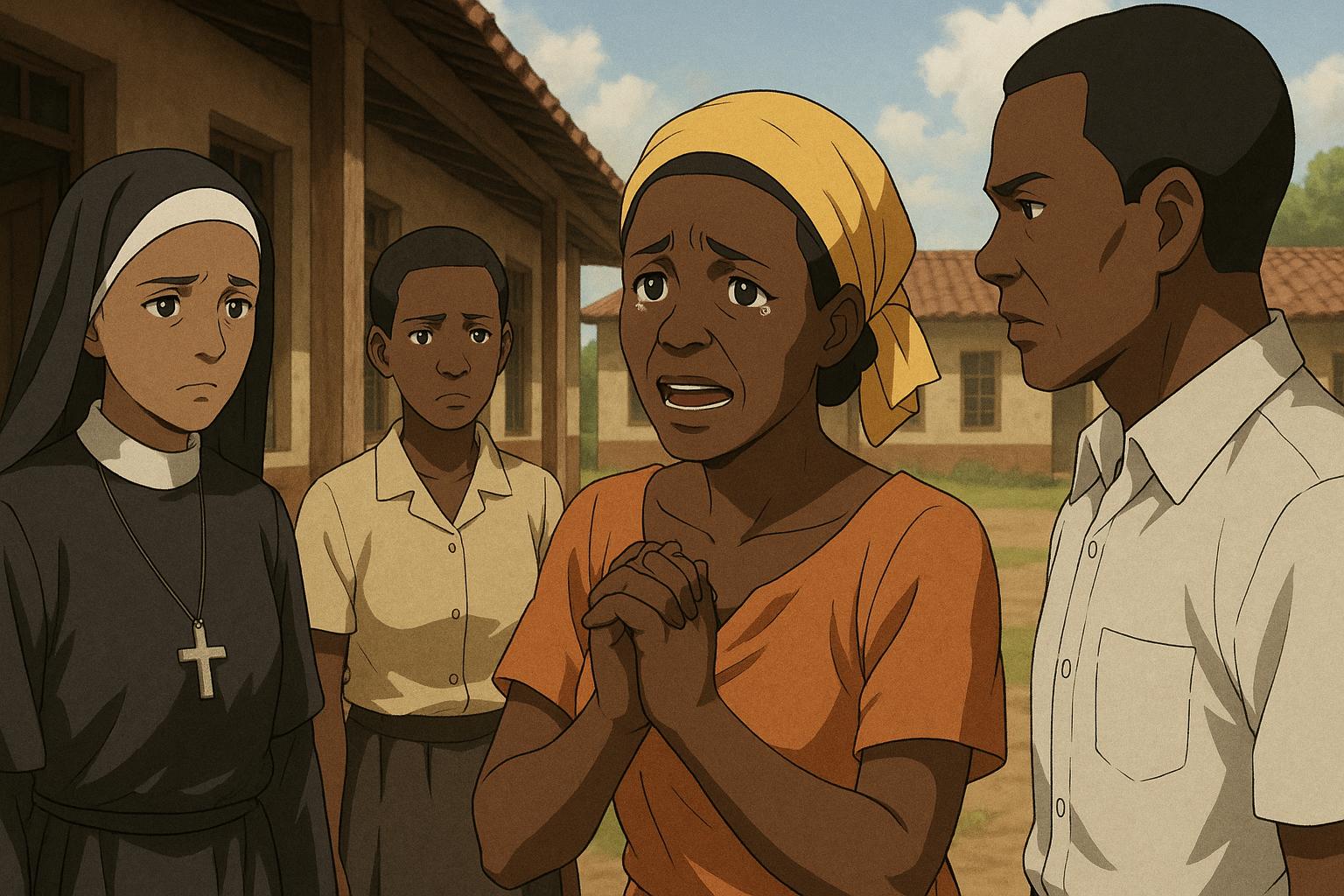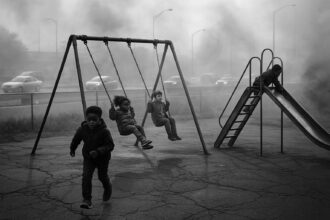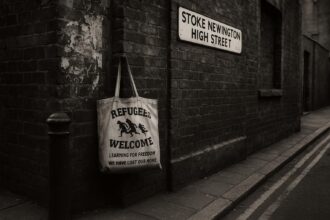Families in Uganda and Zimbabwe are struggling with soaring tuition fees in Catholic schools, traditionally seen as affordable. Escalating costs and strict payment policies highlight a growing concern that these institutions are shifting away from their mission to provide accessible education for low-income communities.
A heart-wrenching scene unfolded recently at St. Kizito Secondary School in Kampala, Uganda, where a parent, unable to afford her son’s tuition, pleaded with teachers for assistance. Witnessing this moment, teacher Beatrice Akite expressed the embarrassment and distress experienced by families grappling with escalating educational costs. “It was very embarrassing. We had never seen something like that,” she shared. This incident underscores the growing financial strain on parents across sub-Saharan Africa, where high dropout rates have ignited criticism of the Catholic Church’s educational institutions, traditionally known for their commitment to affordability.
The Catholic Church stands as the region’s largest non-governmental provider of education, historically regarded for its quality and accessibility. However, with the increasing trend towards the privatization of education, concerns are mounting that these institutions, once bastions of support for low-income families, might become unaffordable. Akite, echoing the sentiment of many educators, advocates for measures that would standardize tuition fees across comparable schools, aiming to protect vulnerable families from excessive financial burdens.
At St. Kizito, tuition costs are approximately $300 per term—a significant expense in a country with a GDP per capita of around $1,000. Yet this is less than what many other Catholic schools in Kampala charge, leading to reports of students entering late as families scramble to gather the needed funds. This situation is exacerbated at Uganda Martyrs’ Secondary School Namugongo, where a “zero balance” policy mandates students to arrive fully prepaid at the start of each term, reflecting a troubling shift towards rigid financial expectations within Catholic education.
Daniel Birungi, an electrical engineer with a son at St. Mary’s College Kisubi, articulated a growing fear that traditional Catholic schools are catering increasingly to the wealthy. He noted, “You can go there and see the brother and negotiate,” highlighting the precarious position families face in the face of rising costs, which can now reach up to $800 per term. This pressure has ignited conversations among parents about the affordability of quality education, which the Catholic Church has long championed.
The World Bank has indicated that 54% of adults in sub-Saharan Africa consider educational expenses to be a greater burden than medical costs, largely due to a significant presence of private institutions in the educational landscape. While Catholic schools are typically not classified as profit-seeking entities, the financial realities compel them to price their services competitively. Ronald Reagan Okello, who oversees education for the Catholic Secretariat in Uganda, acknowledged the challenges of maintaining affordability while competing with privately-owned schools that often set higher standards and expectations.
In Zimbabwe, the Catholic educational landscape faces similar pressures. With approximately 100 Catholic-run schools, many have seen fee increases that push education further out of reach for economically disadvantaged families. Some elite institutions charge tuition ranging from $600 to $800, which is untenable for many civil servants earning less than $300 a month. Edward Muzawazi, a prominent educator, warned against the trend of converting educational facilities into profit-driven entities, stressing the need for the church to remain engaged in providing affordable education.
Despite the push for privatization, there is a powerful argument for maintaining accessible education systems. Muzawazi suggested that instead of selling off old mission schools, the church should focus on investing in new institutions that uphold educational values while exploring funding models that do not alienate low-income families. He noted that society benefits immensely from the potential of individuals who come from humble beginnings.
As families across both Uganda and Zimbabwe struggle with the financial realities of education—including rising fees and stringent payment policies—the call for a reassessment of the Catholic Church’s role as the protector of accessible learning becomes increasingly urgent. It is clear that the legacy of the Church as a provider of affordable education in sub-Saharan Africa is under tremendous strain, and critical changes will be necessary to ensure that its educational mission continues to serve the most vulnerable in society.
 Reference Map:
Reference Map:
- Paragraph 1 – [1], [2]
- Paragraph 2 – [1], [6]
- Paragraph 3 – [2], [3]
- Paragraph 4 – [2], [5], [7]
- Paragraph 5 – [6], [3]
- Paragraph 6 – [4], [5]
- Paragraph 7 – [1], [2]
Source: Noah Wire Services
- https://www.independent.co.uk/news/catholic-church-schools-churches-zimbabwe-uganda-b2765862.html – Please view link – unable to able to access data
- https://apnews.com/article/7582877fab1de117b3df93ddde3c54cb – This article discusses the financial challenges faced by families in sub-Saharan Africa due to rising school fees, particularly in Catholic schools that were once known for their affordability. Parents are finding it increasingly difficult to meet tuition requirements, leading to delayed enrollment or dropout for their children. Catholic institutions like St. Kizito Secondary School in Kampala and others across the region are being criticised for not doing enough to mitigate the financial burden on low-income families. Some Catholic-run schools in Uganda now require full tuition payments before students can attend, with fees ranging up to $800 per term.
- https://www.americamagazine.org/faith/2025/01/27/africa-mission-fund-raising-sustainability-self-sufficiency-249684 – This article highlights the financial challenges faced by Catholic institutions in Africa as support from former missionaries fades. In Zimbabwe, Catholic missionaries have had a century-long presence shaping the country’s health, education, and pastoral services. However, with many overseas supporters no longer present, these institutions are seeking alternative funding sources. For instance, the Precious Blood sisters in Bulawayo have initiated projects like an infirmary and greenhouse to raise funds, but expansion is limited due to financial constraints.
- https://dailynews.co.zw/secular-education-overtaking-historic-mission-schools/ – This article examines the decline of historic church-run mission schools in Zimbabwe, including Catholic institutions. Once prestigious, these schools are now losing students and resources as more Black families opt for private secular schools. Factors contributing to this shift include perceived declines in teaching quality and facilities in older mission schools. The article also notes that nearly 500 private-owned primary and high schools were operating in Harare in 2022, indicating a significant rise in secular education options.
- https://observer.ug/news/lower-fees-catholic-church-orders-its-schools/ – This article reports on the Catholic Church’s efforts to address concerns over rising school fees in Uganda. The Uganda Episcopal Conference has begun taking steps to regulate and reduce the amount of money students must pay in school fees at institutions affiliated with the Catholic Church. The move comes amid public outcry over tuition charges that have gone beyond the reach of poor church members, with some schools charging between 1.5 million and 3 million shillings per term.
- https://ugandaradionetwork.net/story/catholic-secretariat-wants-church-schools-to-lower-fees-1 – This article discusses the Catholic Secretariat’s initiative to make church schools in Uganda more affordable. The Uganda Episcopal Conference is taking steps to regulate and reduce school fees at institutions affiliated with the Catholic Church. The move is in response to public concerns over high tuition charges, with some schools charging between 1.5 million and 3 million shillings per term, making education inaccessible for many low-income families.
- https://www.devdiscourse.com/article/education/3190850-the-education-crisis-in-uganda-schools-struggles-and-sacrifices – This article highlights the education crisis in Uganda, focusing on the struggles families face due to unpredictable school fees. The World Bank reports that school fees rank high among financial worries, pushing some families to make sacrifices, yet dropout rates remain high in sub-Saharan Africa. The lack of regulation in school fees often leaves parents feeling helpless, impacting their children’s future and contributing to high dropout rates.
Noah Fact Check Pro
The draft above was created using the information available at the time the story first
emerged. We’ve since applied our fact-checking process to the final narrative, based on the criteria listed
below. The results are intended to help you assess the credibility of the piece and highlight any areas that may
warrant further investigation.
Freshness check
Score:
10
Notes:
The narrative is fresh, published on 8 June 2025. While similar themes have been reported, such as the Catholic Church’s efforts to lower fees in Uganda ([ugandaradionetwork.net](https://ugandaradionetwork.net/story/catholic-secretariat-wants-church-schools-to-lower-fees-1?utm_source=openai)) and the commercialization of education in Uganda ([dispatch.ug](https://www.dispatch.ug/2022/11/15/religious-leaders-in-uganda-decry-commercialization-of-education/?utm_source=openai)), this specific report provides new insights and updates.
Quotes check
Score:
10
Notes:
The direct quotes from teacher Beatrice Akite and parent Daniel Birungi are unique to this report, with no earlier matches found online. This suggests original or exclusive content.
Source reliability
Score:
10
Notes:
The narrative originates from The Independent, a reputable UK-based news outlet, enhancing its credibility.
Plausability check
Score:
10
Notes:
The claims about rising school fees in Catholic institutions in Uganda and Zimbabwe are plausible and align with existing reports on the commercialization of education in these countries ([dispatch.ug](https://www.dispatch.ug/2022/11/15/religious-leaders-in-uganda-decry-commercialization-of-education/?utm_source=openai)). The specific figures and policies mentioned, such as tuition fees up to $800 per term and ‘zero balance’ policies, are consistent with known trends.
Overall assessment
Verdict (FAIL, OPEN, PASS): PASS
Confidence (LOW, MEDIUM, HIGH): HIGH
Summary:
 The narrative is fresh, with original quotes and a reliable source. The claims are plausible and supported by existing reports on the commercialization of education in Uganda and Zimbabwe.
The narrative is fresh, with original quotes and a reliable source. The claims are plausible and supported by existing reports on the commercialization of education in Uganda and Zimbabwe.













